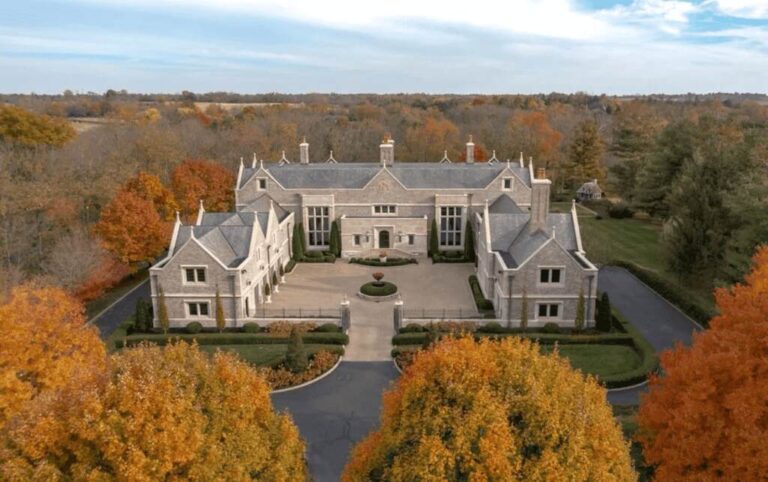Have you ever tried to picture how big 10 acres really is?
It’s easy to say “435,600 square feet,” but numbers alone don’t always paint a clear picture.
Is it bigger than a shopping mall? How many houses could fit? Could you walk across it in a minute or an hour?
Whether you’re thinking about buying land, starting a farm, or just curious, let’s break down 10 acres in ways that actually make sense.
How Many Square Feet Is 10 Acres?
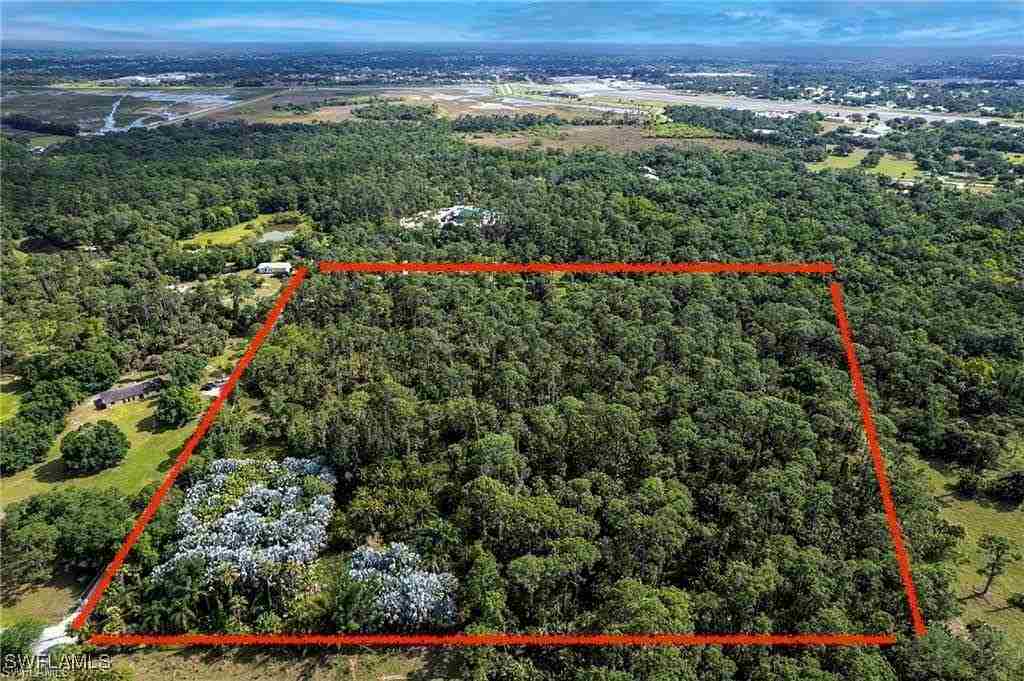
An acre, measuring 43,560 square feet, is a standard unit of land measurement widely used in real estate, agriculture, and surveying. Its origins trace back to medieval England, where it was defined as the amount of land a yoke of oxen could plow in a single day.
So, how big is 10 acres? Simple math tells us that 10 acres equals 435,600 square feet—a massive expanse of land that can be tricky to visualize.
To put it into perspective, 10 acres is roughly 7.5 football fields (excluding end zones), 150 tennis courts, or 200+ suburban homes with yards. If you were to walk the perimeter of a square 10-acre plot, you’d cover about 2,640 feet (or half a mile).
How Many Yards Are in 10 Acres?
Land is measured in various units based on its use. While acres are common in real estate and agriculture, square yards are more practical for landscaping, fencing, and sports field planning.
Since one acre equals 4,840 square yards, 10 acres amounts to 48,400 square yards.
Contractors use square yards for sports field installations, while landscapers rely on them for grass and paving projects. Converting acres to square yards helps landowners and planners better visualize and manage space efficiently.
How Many Acres in a Section?
In the U.S. land survey system, one section equals 640 acres (or 1 square mile), a standardized unit used in agriculture, rural land sales, and government mapping.
Farmers, developers, and surveyors rely on sections for large-scale land management.
Since 10 acres is 1/64th of a section, it represents a small yet valuable portion of land, suitable for farming, residential projects, or recreational use.
The Problem with Most Visual Representations of Land Size
Many online visuals fail to provide a true sense of scale, often using distorted perspectives, lack of landmarks, or unrealistic scaling. These representations can make land seem either too small or too vast, leading to misconceptions about actual space.
Without familiar reference points like homes, roads, or sports fields, it’s difficult to gauge how land fits into real-world settings.
This is why satellite imagery is a more reliable tool. It provides an accurate, top-down view that helps buyers, developers, and landowners better understand the true size and layout of a property.
How Many 10 Acres In Kilometers?
1 acre = 0.004047 square kilometers
10 acres = 0.04047 square kilometers
So, 10 acres is approximately 0.04 km² (or 40,470 square meters).
This measurement is useful for large-scale land planning, especially in countries that use the metric system for real estate, agriculture, and environmental studies.
How Big Is 10 Acres Compared to a Football Field?
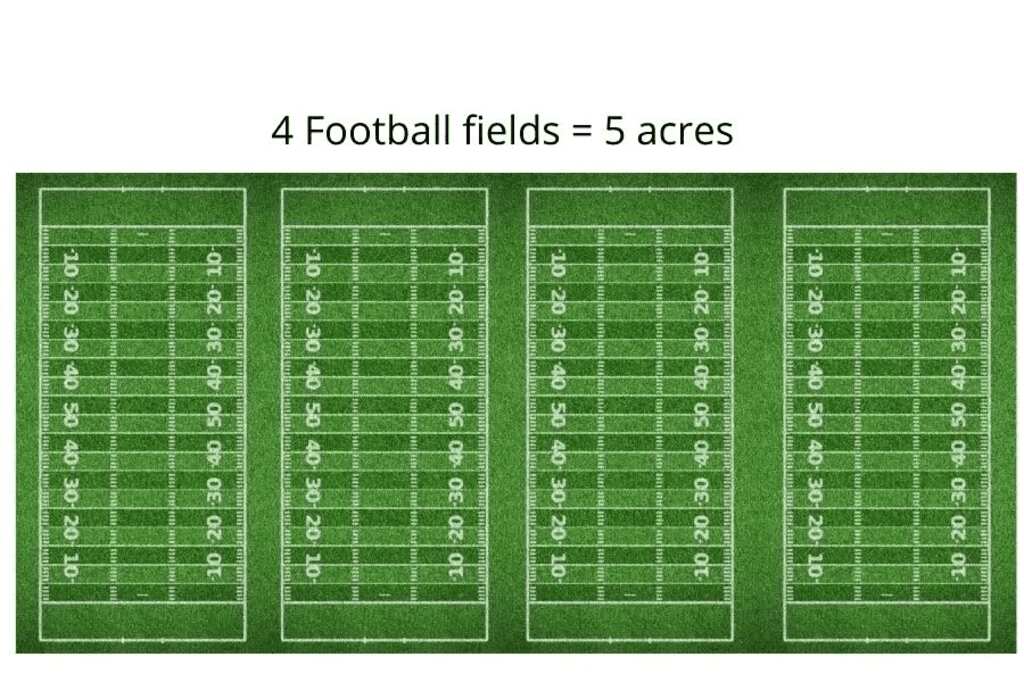
Understanding the size of 10 acres can be challenging without a real-world comparison. Since one acre equals 43,560 square feet, multiplying by 10 gives us a total of 435,600 square feet—a substantial amount of land. But what does that actually look like?
- 7.5 football fields (excluding end zones) could fit within 10 acres.
- It’s equivalent to 150 tennis courts placed side by side.
- You could fit 200+ average suburban homes, assuming standard lot sizes.
- If shaped as a square, a 10-acre plot would measure roughly 660 feet per side.
- Walking around its perimeter would cover 2,640 feet (or 0.5 miles)—about the length of 10 city blocks.
In practical terms, 10 acres offers a vast amount of space, making it ideal for large residential properties, farming, commercial development, or recreational use. Whether you’re envisioning a homestead, a horse ranch, or a private retreat, this amount of land provides plenty of flexibility.
10 Real-World Examples of 10 Acres
1. Central Park (New York City, NY)

Central Park spans 843 acres, but a 10-acre section could include ball fields, walking trails, and scenic picnic areas. In an urban setting, this much green space offers a peaceful retreat from city life.
2. Beverly Hills Estate (Los Angeles, CA)

In Beverly Hills, a 10-acre estate is enough for a mansion, guest houses, a pool, and private gardens. Some of the most expensive homes in America sit on this much land, offering privacy and exclusivity.
3. Navy Pier (Chicago, IL)
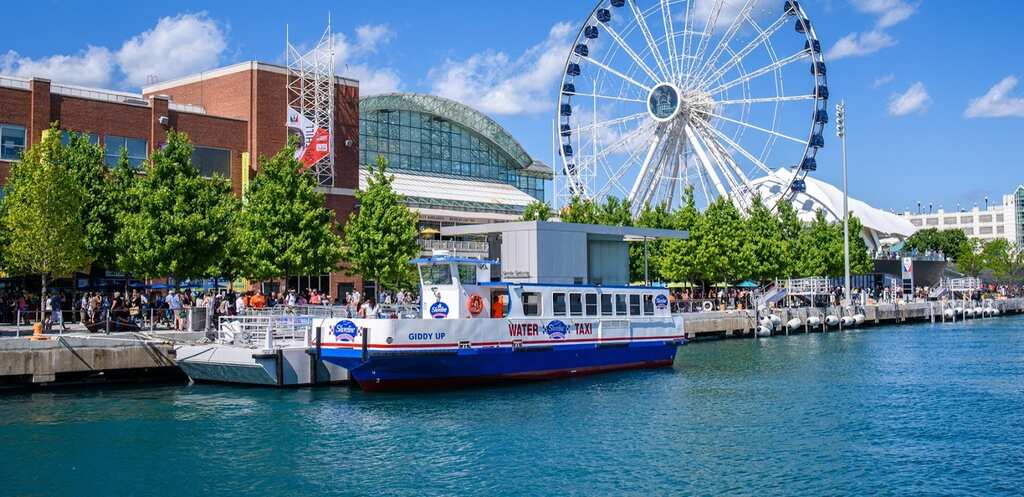
Navy Pier covers 50 acres, but a 10-acre section could fit an amusement park, restaurants, and event spaces. This shows how a prime waterfront location can be used for commerce and recreation.
4. The Las Vegas Strip (Las Vegas, NV)

On the Las Vegas Strip, 10 acres could hold a massive hotel, casino, and entertainment venue. Real estate here is highly valuable, making it an example of how space is maximized in commercial hotspots.
5. Golden Gate Park (San Francisco, CA)

Golden Gate Park is over 1,000 acres, but a 10-acre portion could include botanical gardens, trails, or playgrounds. This illustrates how urban areas preserve land for public use.
6. South Beach (Miami, FL)

A 10-acre oceanfront resort in South Beach could accommodate a luxury hotel, pools, beach clubs, and dining venues, showcasing the high demand for coastal real estate.
7. AT&T Stadium (Dallas, TX)
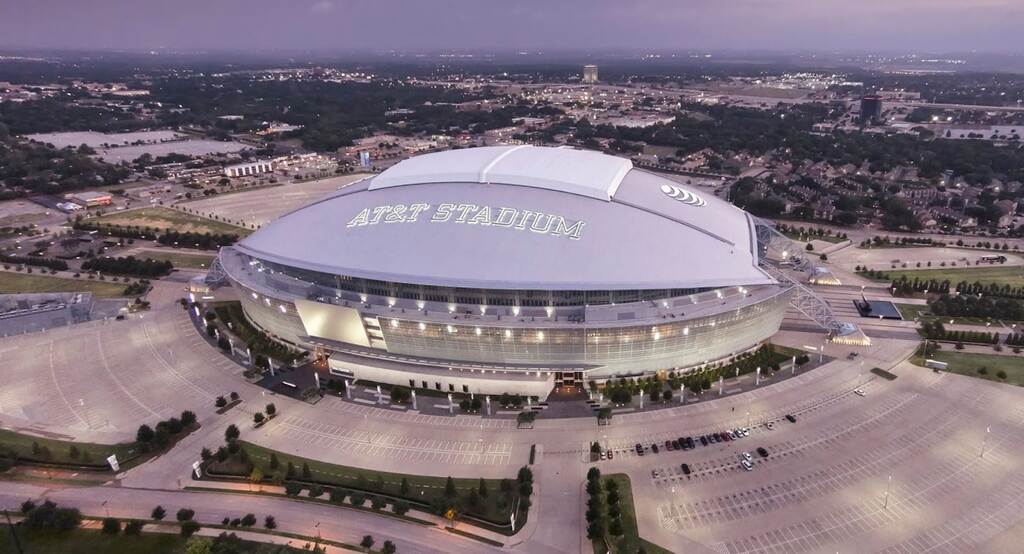
AT&T Stadium comprises over 100 acres. A 10-acre section of AT&T Stadium (home of the Dallas Cowboys) could fit a full-sized football field plus fan areas, highlighting how large-scale sports complexes are designed.
8. Silicon Valley (San Jose, CA)
![]()
Silicon Valley covers an area of 1,854 square miles. A 10-acre site in Silicon Valley could house a major tech company’s headquarters, research labs, or data centers, demonstrating how land is used for innovation and business growth.
9. Iowa Cornfields (Des Moines, IA)
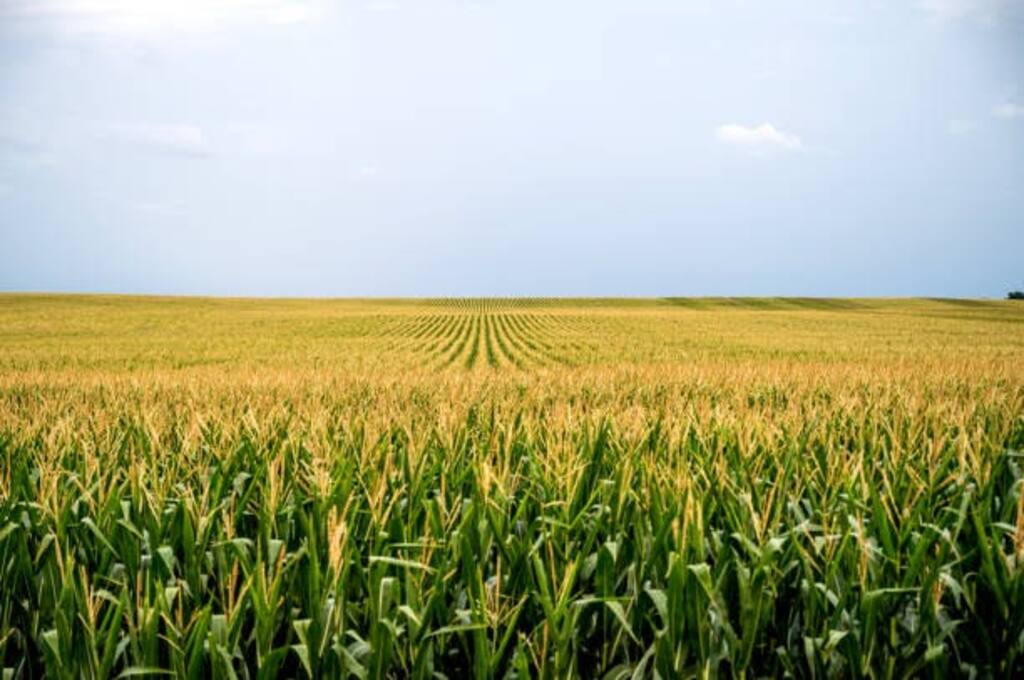
Iowa producers planted an estimated 13.1 million acres of corn. A 10-acre farm in Iowa could produce corn, soybeans, or wheat, showing how farmland supports food production and the economy.
10. Nashville Music Venues (Nashville, TN)
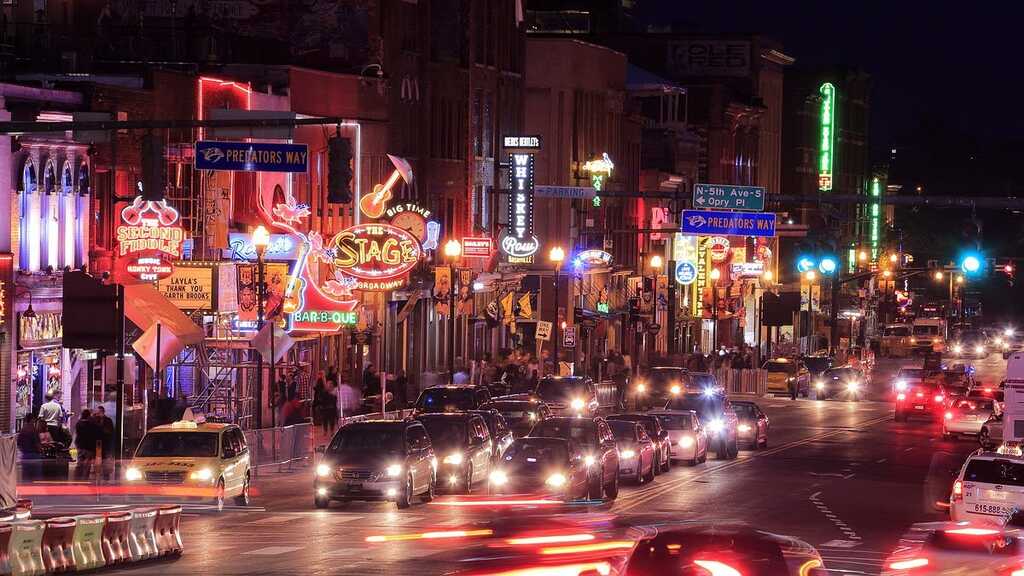
The Nashville Yards music venue is planned to be built on an 18-acre. A 10-acre stretch in downtown Nashville could include concert venues, recording studios, and bars, making it a prime example of how land supports entertainment industries.
How many houses can be built in 10 acres?
The number of houses that can be built on 10 acres depends on zoning and lot sizes, with approximately 40 homes on ¼-acre lots, 80 homes on ⅛-acre lots, 10 homes on 1-acre lots, and around 5 homes for luxury estates with 2+ acres each, factoring in roads, setbacks, and amenities.
How Long Would It Take to Walk Across 10 Acres?
The time it takes to walk across 10 acres depends on the shape of the land and walking speed. A square 10-acre plot is about 660 feet (201 meters) per side. At an average walking speed of 3 mph (4.8 km/h), it would take about 2–3 minutes to walk across one side. Walking the entire perimeter (2,640 feet or 0.5 miles) would take roughly 10 minutes.
Is 10 Acres Considered a Farm?
Yes, 10 acres can be considered a farm, but its classification depends on land use and local regulations. While large commercial farms are much bigger, 10 acres is enough for small-scale farming, including livestock, orchards, vineyards, or vegetable crops. Many hobby farms and family-owned operations successfully operate on 10 acres.
Conclusion
We’ve explored how 10 acres translates into real-world use, from residential estates and farmland to commercial developments. This land size is versatile, and understanding its scale is essential for buyers, investors, and planners.
Accurate comparisons help in better decision-making, whether for property purchases, agriculture, or development. With clear visuals and real-world examples, 10 acres becomes more than just a number—it’s a space full of possibilities.

